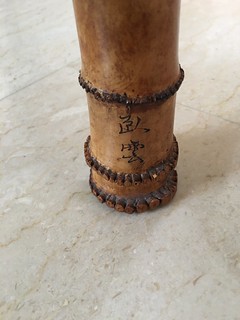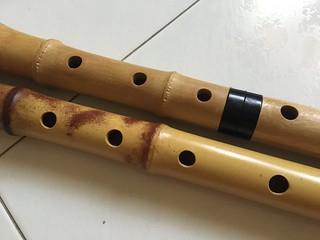 The shakuhachi like other traditional hand crafted instruments has its quirks. Or maybe one should say each culture has its uniqueness, and it appears the older forms of shakuhachi music preferred some notes to be more flat or sharp. This defies the current Western convention of equal temperament which society has accepted as the norm.
The shakuhachi like other traditional hand crafted instruments has its quirks. Or maybe one should say each culture has its uniqueness, and it appears the older forms of shakuhachi music preferred some notes to be more flat or sharp. This defies the current Western convention of equal temperament which society has accepted as the norm.The design of this instrument allows great freedom due to its openness in the blowing edge with multiple degrees of freedom (up/down, left/right, yawing, pitching, rolling), providing fine control at microtonal level to the player. This is what makes it a difficult instrument to master as it means self mastery of the breath, embouchure, body and flute positioning, in addition to other aspects of music training.
I found Jon Kypros’ description about these pitch idiosyncrasies clear and helpful:
http://flutedojo.com/shakuhachi-guides/pitches-on-shakuhachi
For now my “antique” 玉井 竹仙 instrument will need a bit of DIY fix up (blue tac works wonders) advised by my teacher to bring it up to contemporary times. The higher pitched third hole (チ) note is lowered near to A4 frequency so that it is closer to equal temperament. I don't blame the seller for passing this flute to me, the "imperfection" created opportunity for me to learn more than I would have on a perfect instrument (is there such a thing anyway).


